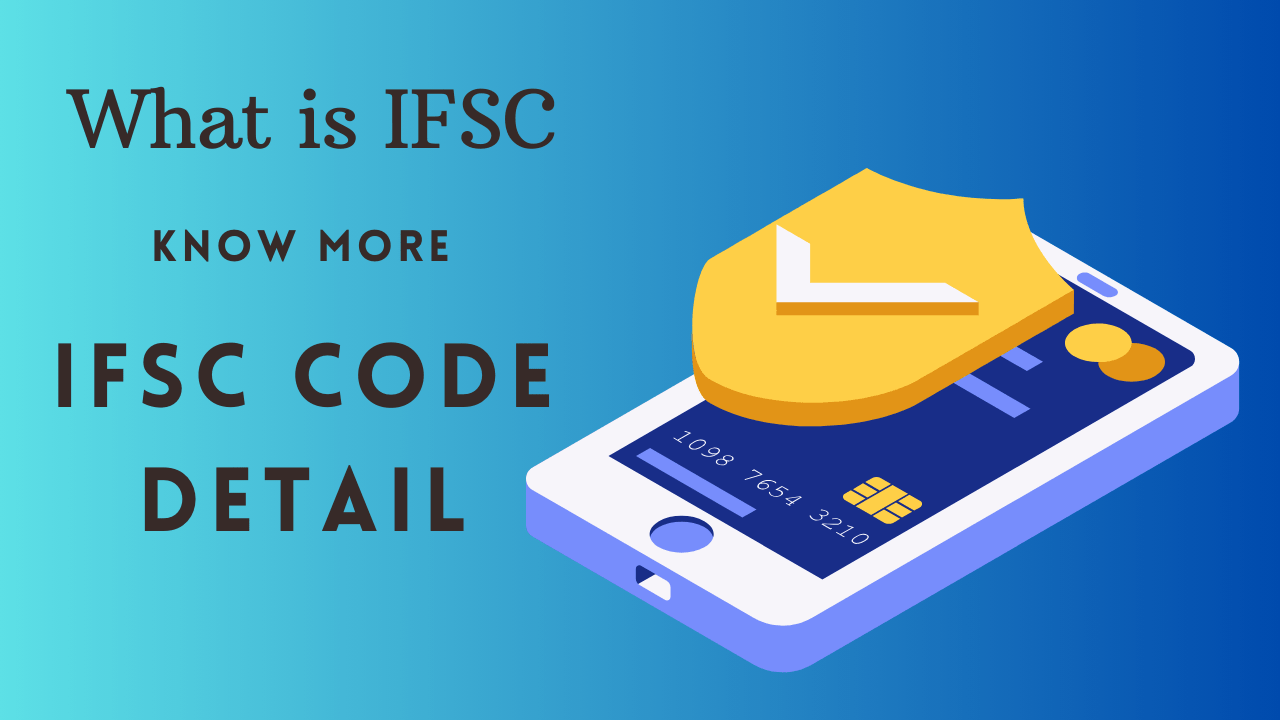In the fast-paced world of banking and finance, the IFSC code stands as a crucial element, facilitating seamless electronic transactions across India. Indian Financial System Code (IFSC), assigned by the Reserve Bank of India (RBI), serves as a unique identifier for banks and their branches, ensuring accuracy and security in fund transfers.
Let's delve into the intricacies of IFSC codes, exploring their structure, utility, and implications in the realm of modern banking.
Introduction to IFSC Codes
IFSC codes, comprising eleven characters, play a pivotal role in electronic fund transfers within India. These codes are meticulously assigned by the RBI to each bank branch, enabling swift and error-free transactions. The first portion of the code, consisting of four letters, represents the bank's identity, followed by a zero for future use, and the last six characters denote the specific branch.
A Brief Overview of IFSC Codes
IFSC codes serve as an integral part of the National Electronic Funds Transfer (NEFT), Real-Time Gross Settlement (RTGS), and Immediate Payment Service (IMPS), streamlining the transfer of funds across different banks and financial institutions.
Importance of IFSC Codes in Banking Transactions
The significance of IFSC codes lies in their ability to ensure accuracy and efficiency in electronic transactions, eliminating the risk of errors and misdirection of funds. By using IFSC codes, individuals and businesses can execute transactions with confidence, knowing that their funds will reach the intended recipient promptly.
Role of the Reserve Bank of India (RBI) in Assigning IFSC Codes
As the apex regulatory authority in the Indian banking sector, the RBI oversees the allocation and management of IFSC codes, ensuring adherence to standardized protocols and guidelines. Banks are required to obtain IFSC codes from the RBI for their branches, thereby maintaining the integrity and reliability of the financial system.
Understanding the Indian Financial System Code (IFSC)
IFSC codes follow a specific structure, comprising eleven characters that convey essential information about the bank and its branch. Let's delve deeper into the composition and significance of IFSC codes.
Definition and Structure of IFSC Codes
An IFSC code consists of alphabetic and numeric characters, with the first four letters representing the bank's name, followed by a zero for future use, and the last six characters denoting the branch code.
Decoding the Eleven-Character Composition
Each segment of the IFSC code serves a distinct purpose, enabling seamless identification and routing of transactions. Understanding the composition of IFSC codes is crucial for ensuring accuracy and reliability in banking operations.
The Significance of Each Segment
- First Four Letters: Represent the bank's identity.
- Fifth Character (Zero): Reserved for future use.
- Last Six Characters: Denote the specific branch of the bank.
Evolution and Development of IFSC Codes in India
IFSC codes have evolved over time, reflecting advancements in technology and changes in the banking landscape. From their inception to their current status as a cornerstone of electronic banking, IFSC codes have undergone significant developments, shaping the way financial transactions are conducted in India.
Historical Context and Regulatory Framework
The introduction of IFSC codes can be traced back to the RBI's efforts to modernize and standardize the Indian banking system, ensuring interoperability and efficiency in fund transfers. Regulatory mandates and directives have played a crucial role in shaping the evolution of IFSC codes, with periodic revisions and updates to meet the changing needs of the banking sector.
Changes and Updates Over Time
Over the years, IFSC codes have undergone revisions and updates to accommodate the expansion of the banking network and changes in regulatory requirements. Banks are required to periodically update their IFSC codes to reflect changes in branch locations, mergers, or acquisitions, ensuring seamless continuity in banking operations.
Comparing IFSC Codes Across Banks
While IFSC codes follow a standardized format, variations may exist among different banks, necessitating careful attention during transaction processing. Let's explore the nuances of IFSC codes and compare them across various banks.
| Bank Name | IFSC Code Format |
|---|---|
| State Bank of India (SBI) | SBINXXXXXXXX |
| HDFC Bank | HDFC0CAXXXX |
| ICICI Bank | ICIC000XXXXX |
| Punjab National Bank (PNB) | PUNB0XXXXXX |
Variations in IFSC Codes Among Different Banks
Each bank may adopt a unique format for its IFSC codes, incorporating its name or a standardized prefix to distinguish its branches. Understanding these variations is essential for accurately identifying and processing transactions across different banks.
Identifying Common Patterns and Formats
Despite variations in IFSC codes, certain patterns and formats may be observed across different banks, facilitating easier identification and interpretation. Recognizing these commonalities can streamline transaction processing and enhance operational efficiency.
Factors Influencing IFSC Code Assignments
Several factors may influence the assignment of IFSC codes to bank branches, including geographical considerations, branch locations, and regulatory requirements. Banks must ensure compliance with RBI guidelines while assigning and managing IFSC codes, maintaining consistency and accuracy in transaction processing.
Example of an IFSC Code in Action
To illustrate the practical utility of IFSC codes, let's consider a real-life scenario involving the transfer of funds between two bank accounts.
Step-by-Step Demonstration of Using an IFSC Code
- Initiation: The sender initiates a fund transfer request through their bank's online banking portal or mobile app.
- Input IFSC Code: The sender enters the recipient's bank details, including the IFSC code of their branch.
- Validation: The sender's bank validates the IFSC code and initiates the transaction.
- Processing: The transaction is processed through the NEFT, RTGS, or IMPS network, depending on the amount and urgency of the transfer.
- Confirmation: Upon successful completion, both the sender and recipient receive confirmation of the transaction.
Real-Life Scenarios: Transaction Processing with IFSC Codes
In everyday banking transactions, IFSC codes play a vital role in ensuring accurate and timely fund transfers. Whether making payments, receiving salaries, or settling bills, individuals and businesses rely on IFSC codes to streamline their financial transactions.
Illustrative Case Study: Tracing the Journey of Funds Using IFSC Codes
Consider a scenario where an individual transfers funds from their account at Bank A to a recipient's account at Bank B. By using the respective IFSC codes, the funds are routed securely and efficiently from the sender's branch to the recipient's branch, with each step of the process meticulously tracked and recorded.
Pros and Cons of IFSC Codes
IFSC codes offer numerous benefits in the realm of electronic banking, but they also present certain challenges and limitations. Let's explore the pros and cons of IFSC codes in detail.
Advantages of IFSC Codes in Banking Operations
- Facilitation of Electronic Fund Transfers: IFSC codes enable seamless and expedited transfer of funds between bank accounts, enhancing convenience for customers.
- Enhanced Accuracy and Security in Transactions: By uniquely identifying each bank branch, IFSC codes minimize the risk of errors and ensure the secure routing of funds, reducing the possibility of fraud or misappropriation.
Limitations and Challenges Associated with IFSC Codes
- Potential Errors and Misinterpretations: Despite their standardized format, IFSC codes may be prone to errors or misinterpretations, leading to delays or failed transactions.
- Accessibility Issues for Non-Digital Users: While IFSC codes streamline electronic transactions, they may pose challenges for individuals or businesses without access to online banking facilities, limiting their utility in certain contexts.
Frequently Asked Questions (FAQs) about IFSC Codes
What is an IFSC Code, and how does it differ from other bank codes?
An IFSC code is an eleven-character alphanumeric code assigned by the RBI to uniquely identify bank branches participating in electronic fund transfers. It differs from other bank codes, such as SWIFT codes or MICR codes, in its specific use case and structure.
How can I find the IFSC Code of my bank branch?
You can easily find the IFSC code of your bank branch by checking your bank's website, using online IFSC code lookup tools, or referring to your account statement or cheque book.
Are IFSC Codes the same for all branches of a bank?
No, each branch of a bank is assigned a unique IFSC code to facilitate accurate routing of transactions. While the initial portion of the IFSC code may indicate the bank's identity, the last six characters vary based on the branch location.
Can IFSC Codes be changed or updated?
Yes, IFSC codes may be changed or updated by banks due to various reasons, such as branch relocations, mergers, or regulatory requirements. It is essential to verify the current IFSC code before initiating any transaction.
What happens if I provide the wrong IFSC Code in a transaction?
Providing the wrong IFSC code in a transaction may result in the funds being routed to the wrong branch or account. In such cases, it is advisable to contact your bank immediately to rectify the error and initiate appropriate measures to recover the funds.
Do international transactions require IFSC Codes?
No, IFSC codes are used exclusively for domestic fund transfers within India. For international transactions, other codes such as SWIFT codes are used to identify banks and facilitate cross-border payments.
Are IFSC Codes case-sensitive?
No, IFSC codes are not case-sensitive, meaning they can be entered in uppercase or lowercase letters without affecting the transaction's processing.
How long does it take for a transaction using IFSC Code to be processed?
The time taken for a transaction using IFSC code to be processed depends on the payment system used (NEFT, RTGS, or IMPS) and the policies of the participating banks. Generally, NEFT transactions are settled in batches at predefined intervals, while RTGS and IMPS transactions offer real-time processing.
Can I use someone else's IFSC Code for my transactions?
No, it is not advisable to use someone else's IFSC code for your transactions, as it may result in the funds being credited to the wrong account. Always verify the accuracy of the recipient's IFSC code before initiating any transaction.
Is it safe to share IFSC Codes with others?
While sharing IFSC codes is necessary for conducting transactions, it is essential to exercise caution and ensure that sensitive information is shared securely. Avoid sharing IFSC codes on public platforms or with unauthorized individuals to prevent the risk of unauthorized transactions.
Conclusion
In conclusion, IFSC codes serve as the backbone of electronic banking in India, facilitating seamless and secure fund transfers across banks and financial institutions. By understanding the structure, utility, and implications of IFSC codes, individuals and businesses can navigate the complexities of modern banking with confidence and ease. As technology continues to evolve, IFSC codes will remain indispensable tools for ensuring efficiency, accuracy, and transparency in financial transactions.
Have any questions or insights to share about IFSC codes? Feel free to leave a comment below and join the conversation!
Disclaimer: This blog post is for informational purposes only and should not be construed as financial advice. Readers are encouraged to consult with their financial institutions or professional advisors for personalized guidance.




Write a comment